“When I was a speck of dust he had embarked on the ship to go abroad ...”. This lyric of a song by Pham Minh Tuan urged me to visit Saigon Port, the place from which on June 5, 1911 Uncle Ho (young patriot Nguyen Tat Thanh at that time) embarked on the ship Amiral Latouche Treville to start his journey to seek ways to liberate the nation.
We visited that historical place (present-day Ho Chi Minh Museum) on a calm morning while the whole country was celebrating the 100th anniversary of the day Uncle Ho (President Ho Chi Minh) left the country to seek ways for national salvation. The museum displays precious documents and exhibits on the life and cause of President Ho Chi Minh. He left the country when he was very young. After 30 years of traveling abroad he returned home to direct the revolutionary movement that led to the success of the August Revolution and the birth of the Democratic Republic of Vietnam on September 2, 1945. After that he held the highest posts of the Party and State and led the entire nation in victories in the resistance wars against the French colonialists and the US imperialists.
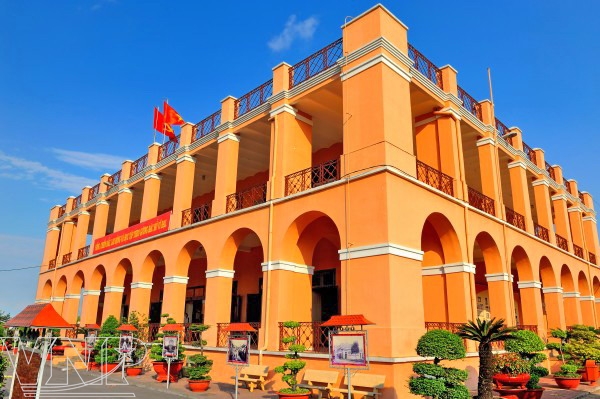
Ho Chi Minh Museum displays precious documents and exhibits on the life and cause of President Ho Chi Minh.
Photo: Nguyen Luan
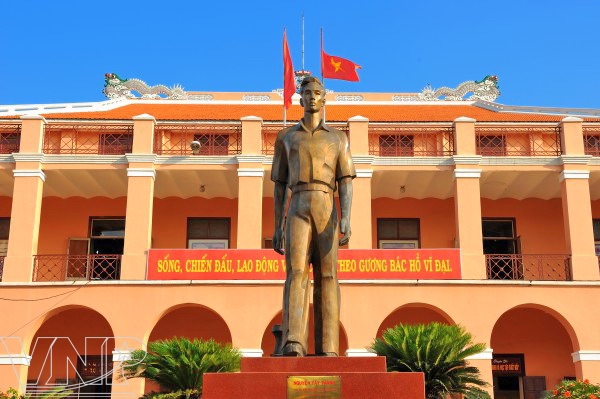
Statue of young patriot Nguyen Tat Thanh who left the country to seek ways to liberate the nation. Photo: Nguyen Luan
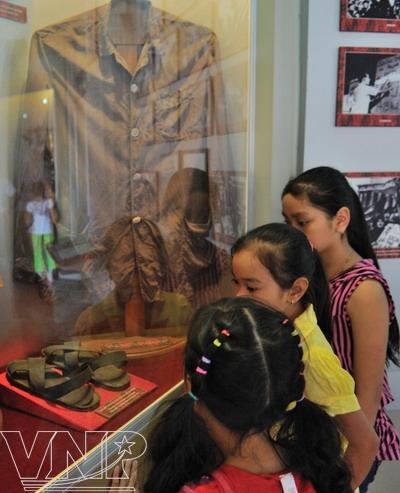
Children learn about President Ho Chi Minh’s belongings. Photo: Nguyen Luan
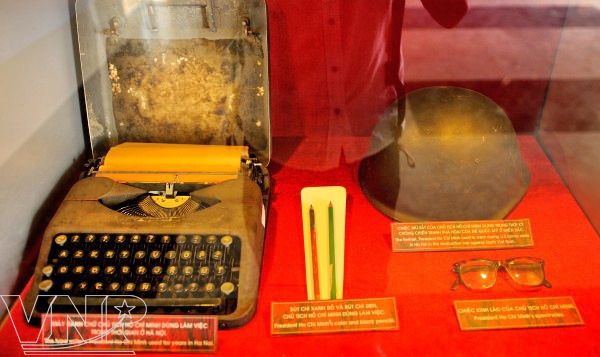
Uncle Ho’s belongings on display at the museum. Photo: Nguyen Luan
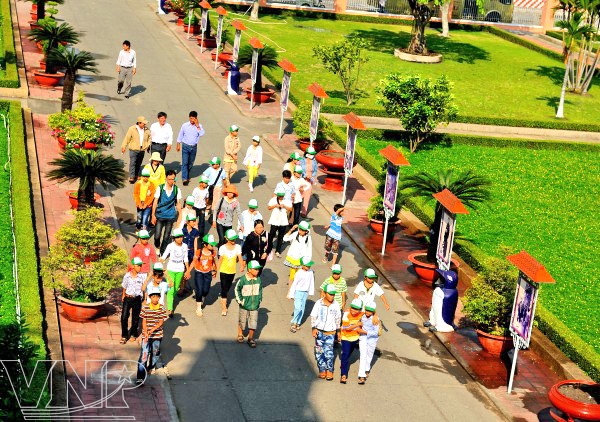
A group of children visit the museum. Photo: Nguyen Luan
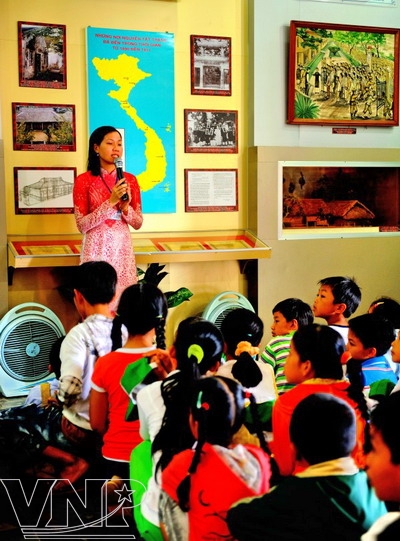
A guide tells a story about Uncle Ho. Photo: Nguyen Luan

An elder learns about the life of President Ho Chi Minh, beloved father of the Vietnamese nation.
Photo: Nguyen Luan
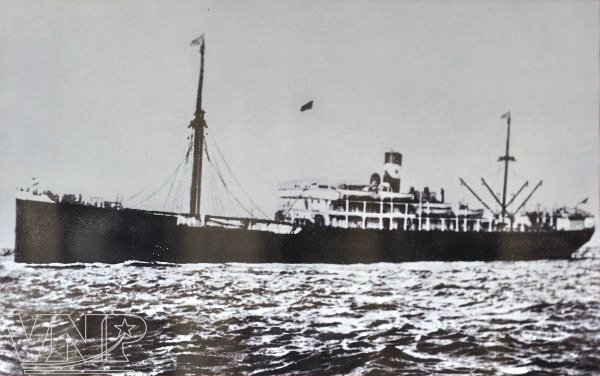
The ship Ariral Latouche Treville that took young patriot Nguyen Tat Thanh from Saigon Port on June 5, 1911 to start his journey to seek ways to liberate the nation. Photo: File
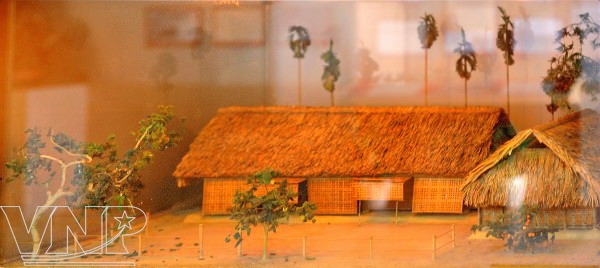
The model of Uncle Ho’s house in his native place – Sen Village, Kim Lien Commune, Nam Dan District, Nghe An Province, at the Ho Chi Minh Museum. Photo: Nguyen Luan
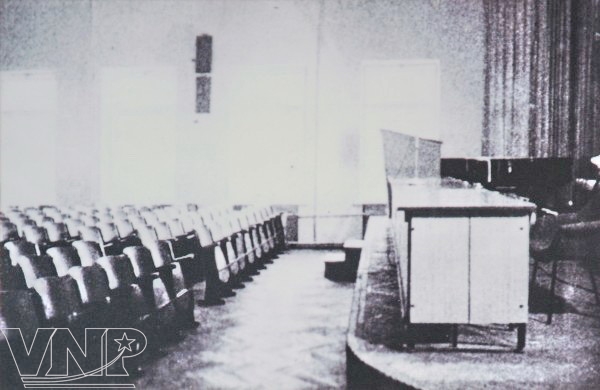
Phuong Dong (Oriental) University in 1923-1924. Photo: File
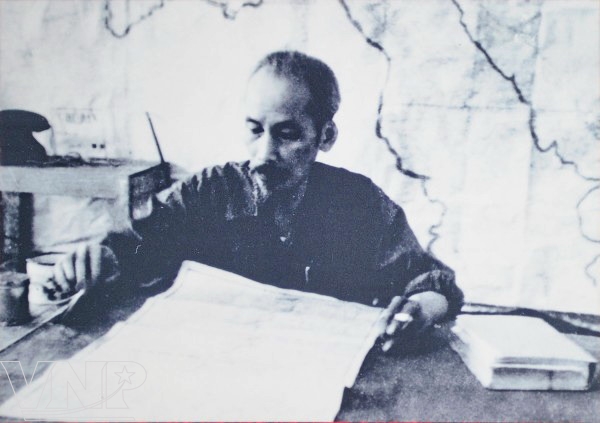
President Ho Chi Minh examines a Winter-Spring 1953-1954 military map. Photo: File
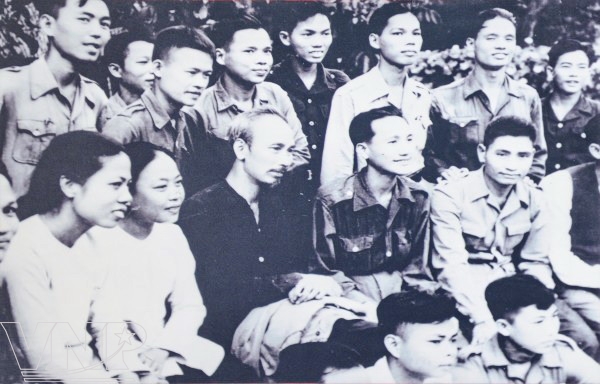
President Ho Chi Minh with a delegation of the Southern People, Government and Party in 1949. Photo: File
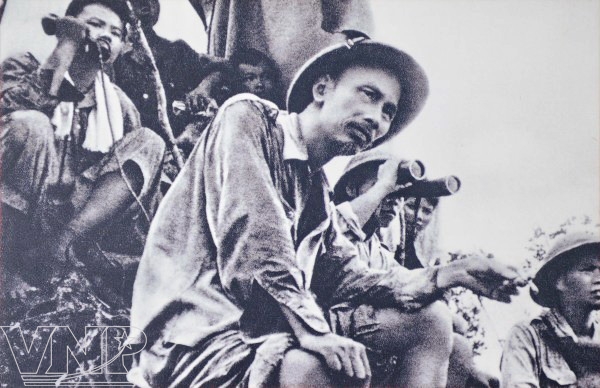
President Ho Chi Minh at the look-out post of the Dong Khe front during the Border Campaign in 1950. Photo: File
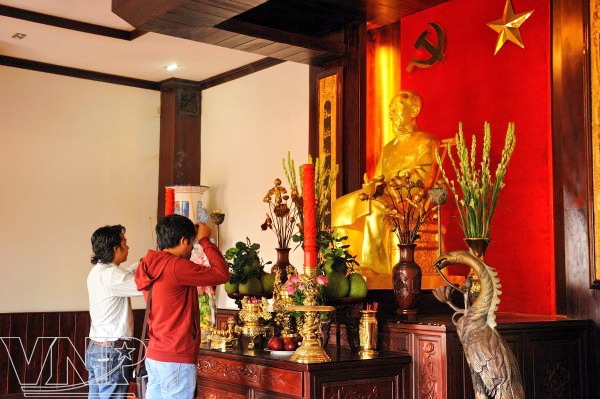
The worshipping hall dedicated to President Ho Chi Minh at the Ho Chi Minh Museum. Photo: Nguyen Luan |
“The documents and exhibits preserved at Ho Chi Minh Museum, particularly the documents and exhibits kept in stores are invaluable assets of the nation. All of them must be protected and preserved for future generations. They are useful documents for scientific research and scientific education.”
(Dr. Nguyen Thi Hoa Xinh, Director of Ho Chi Minh Museum – Ho Chi Minh City Branch) |
Visitors to the museum included old people, children, veterans, international friends, students and pupils. They took this opportunity to commemorate President Ho Chi Minh and study and follow his example. In the visitors’ book, Paul Van Camp, an American man wrote: “... All of us can learn from him valuable lessons about his integrity, clear-sightedness and life-long attachment to his ideal. Now, we – the Americans who share a love for freedom, can together with you honour a great President Ho Chi Minh.” A young woman Vu Thi Dan Tra wrote: “This is the first time my husband and I took my 3-year-old, Vo Viet Khai Nguyen to visit a museum and Ho Chi Minh Museum is the first museum we visited. Nguyen liked Uncle Ho’s suit very much. He also clasped his hands in front of Uncle Ho’s altar. He looked at his portrait and sang the song “who loves Uncle Ho much more than the children do’. His love for him deeply moves us....”
The Ho Chi Minh Museum was established in 1979 (before that time it was the Commemorative Area for President Ho Chi Minh). Now the museum is a branch of a system of museums and relic sites in commemoration of President Ho Chi Minh nationwide. The documents, exhibits and lively images on display at the museum focus on Uncle Ho leaving the country to seek ways for freedom and his affection for the South and the southern people’s love for him. In addition to its main activities, the Ho Chi Minh Museum also organizes popular and educational activities, such as scientific conferences, talks among different generations and seminars on President Ho Chi Minh. They introduce and provide films, documents, memoirs and publications about President Ho Chi Minh and the museum. They organiz contests on the biography and revolutionary causes of President Ho Chi Minh.
On the occasion of the 100th anniversary of the day Uncle Ho left the country (June 5, 1911 – June 5, 2011), the Ho Chi Minh Museum collaborated with the Archives of the Party Central Committee’s Office to organize an exhibition entitled “President Ho Chi Minh with the Pathway to Liberate the Nation” which displayed over 200 documentary objects. On June 5, 2011, a meeting was solemnly held and a live TV programme connecting five cities and provinces – Hanoi, Ho Chi Minh City, Nghe An, Cao Bang and Dong Thap, was broadcast. The museum also collaborated with children’s halls, schools, cultural houses, industrial zones, export processing zones and offices in Ho Chi Minh City, and the cities and provinces in the south to organize mobile exhibitions with the themes “Uncle Ho with Children”, “Biography and Cause of President Ho Chi Minh”, “President Ho Chi Minh and the Vietnamese Working Class”, “President Ho Chi Minh with Young Vietnamese People” and “President Ho Chi Minh with the Educational Cause”.
President Ho Chi Minh is not only an eminent politician and a genius in military strategy but also a great educator and culturist. He has been awarded the title “hero of national liberation and preeminent culturist” by UNESCO. At the present-day Ho Chi Minh Museum (Saigon Port in the past) his imprints remain forever.
Story: Nguyen Vu Thanh Dat - Photo: Nguyen Luan